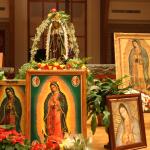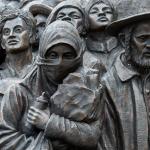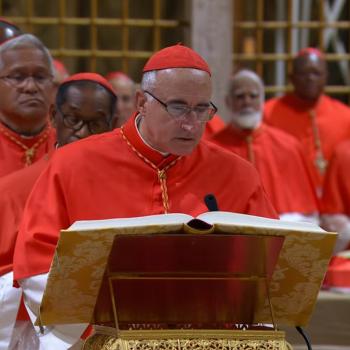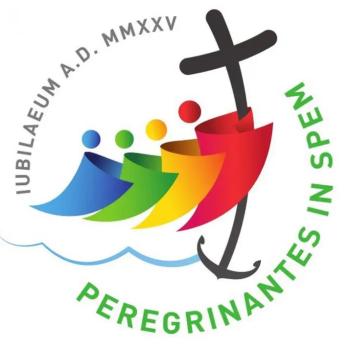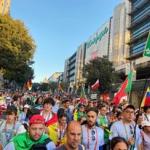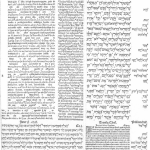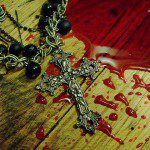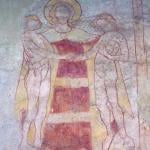The Virgin Mary appeared four times to Saint Juan Diego on December 1531, only ten years after the defeat of the Aztec empire in Mexico by the Spanish. This time period marked the integration of Spanish and native cultures which ultimately gave rise to a unique people and culture which continues to flourish today throughout Latin America.
Mary’s words to Juan Diego were soon recorded in the work called Nican Mopohua written in Nahuatl, the language of the natives. Her words for this new mestizo society that was forming in Latin America were of maternal care and encouragement. In the first apparition on December 9th she said to Juan Diego, “Know and understand well, you the most humble of my sons, that I am the ever virgin Holy Mary, Mother of the True God for whom we live, of the Creator of all things, Lord of heaven and the earth. I wish that a temple be erected here quickly, so I may therein exhibit and give all my love, compassion, help, and protection, because I am your merciful mother, to you, and to all the inhabitants on this land and all the rest who love me, invoke and confide in me; listen there to their lamentations, and remedy all their miseries, afflictions and sorrows.”
During the days surrounding the anniversary of the apparitions, an estimated five million pilgrims visit the shrine north of Mexico City, most commonly called “La Villa” by locals. Adding the fifteen million who visit throughout the year, the shrine is the most visited Catholic site in the world. Our Lady continues to keep her promise making the Tepeyac Hill a place where she gives all her love, compassion, help and protection to the inhabitants of the world.
During the fourth apparition on December 12th Our Lady said to Juan Diego, “Hear me and understand well, my son the least, that nothing should frighten or grieve you. Let not your heart be disturbed. Do not fear that sickness, nor any other sickness or anguish. Am I not here, who is your Mother? Are you not under my protection? Am I not your health? Are you not happily within my fold? What else do you wish? Do not grieve nor be disturbed by anything.”
The Virgin Mary’s maternal words to Juan Diego continue to echo in the hearts of all those who love her, especially the twenty million pilgrims who visit her shrine each year. Devotion to Our Lady of Guadalupe runs deep in the blood of the Mexican faithful and plays an integral role in their identity as Catholics and Mexicans. Our Lady of Guadalupe is a reflection of who they are as a people and has sustained them throughout their turbulent history.
From the day of independence on September 14th, 1810, when the Catholic priest Miguel Hidalgo proclaimed Mexican independence at his parish proclaiming, “long live Our Lady of Guadalupe! Death to bad government! Death to the Gachupines [Spaniards settled in Mexico],” the Virgin Mary has played a foundational role in Mexican identity. The independence movement plastered the image of Our Lady of Guadalupe on its military banners, leading the new nation to victory against Spain. Many years ago, an elderly parishioner told me with profound conviction, “to be Mexican is to be Guadalupano.”
Pope Saint John Paul II’s first Apostolic trip took him to the Shrine of Our Lady of Guadalupe in 1979. He would return many times throughout his pontificate as a loving son imploring the prayers and assistance of Our Lady. During a visit in 1999, he entrusted the future of the American continent to the Blessed Mother. He implored her to “look with mercy on the distress of those suffering from hunger, loneliness, rejection or ignorance… make us recognize them as your favorite children and give us the fervent charity to help them in their need.” He prayed that we would “act according to the requirements of justice and respect for human rights, so that peace may thus be established once and for all.” This prayer continues to be pertinent today. May Our Lady of Guadalupe, mother to all, be a source of hope and sustenance for us, reminding us that regardless of our background, we are all members of the same family, sons and daughters of the same Father.
Picture is mine.


